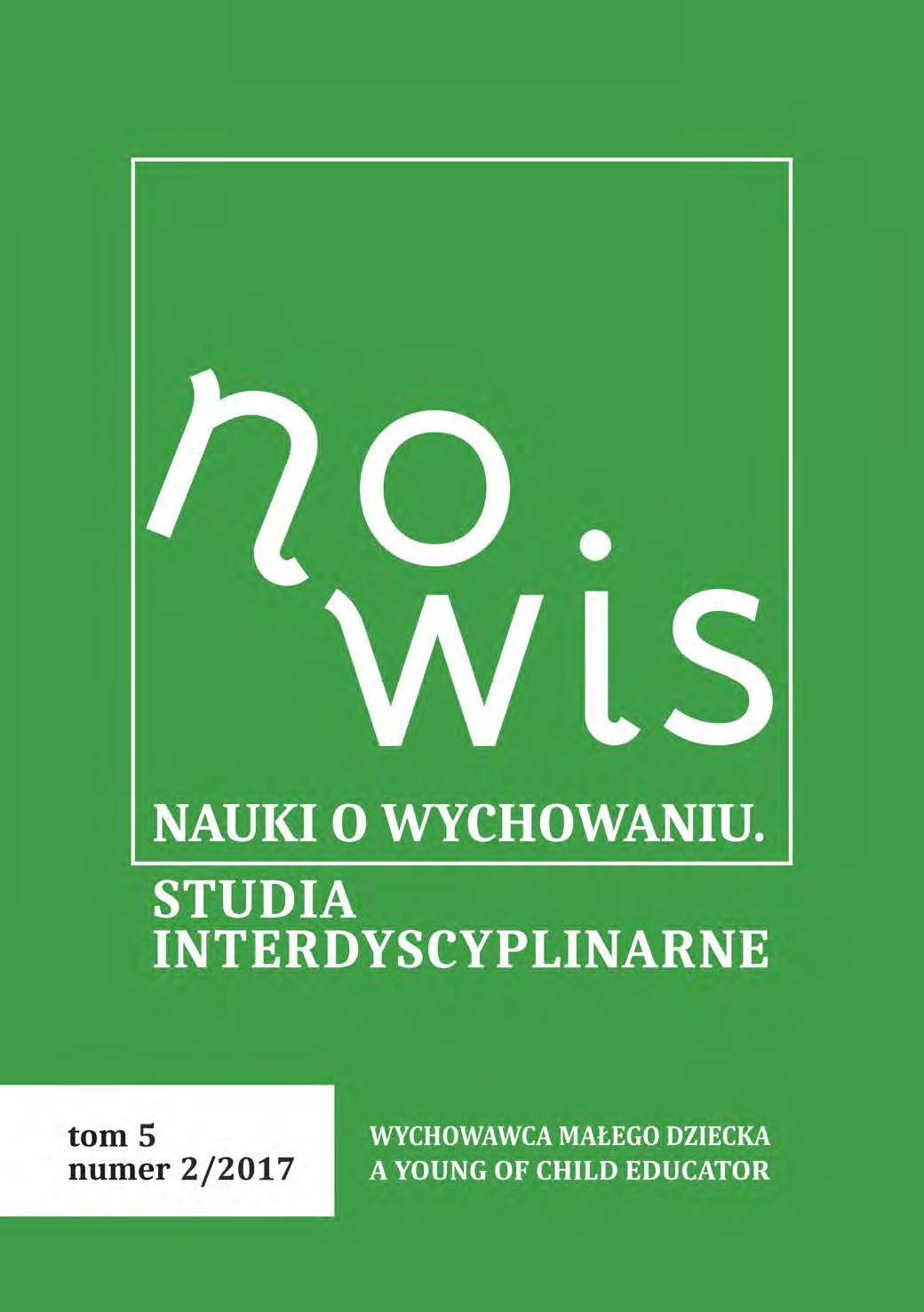QualityMatters: How and under what conditions does quality in early education and care matter? A study across four European countries
DOI :
https://doi.org/10.18778/2450-4491.05.13Mots-clés :
ECEC quality, teacher-child interactions, cross-countryRésumé
QualityMatters, an extension of a European Commission funded study, the CARE project, intends to examine whether the quality of teacher-child interactions varies as a function of particular classroom features (e.g., types of activities, content, and grouping), to answer the overarching question: how and under what conditions does quality in early education and care matter? Through a cross-cultural process-oriented approach, the researchers in QualityMatters will capitalize on the variation in the ECEC systems present in 4 European countries (Finland, Netherlands, Poland, Portugal) to examine the complex relations of teachers’ choices regarding the activity and teacher-child interactions. The project will examine the extent to which children’s classroom interactions with teachers vary across activity settings, while taking into consideration country specifications regarding structural regulations. While much of the ECEC research has examined process and structural quality as separated constructs, QualityMatters will look at aspects at the intersection of process and structure, likely to be relevant for child development and learning.
Références
Barros S., Aguiar C. (2010) Assessing the quality of Portuguese child care programs for toddlers, “Early Childhood Research Quarterly”, 25: 527–535.
View in Google Scholar
Booren L. M., Downer J. T., Vitiello V. E. (2013) Observations of children’s interactions with teachers, peers, and tasks across preschool classroom activity settings, “Early Education and Development”, 23 (4): 517–538.
View in Google Scholar
Cadima J., Leal T., Burchinal M. (2010) The quality of teacher-student interactions: Associations with first graders’ academic and behavioral outcomes, “Journal of School Psychology”, 48: 457–482.
View in Google Scholar
Cryer D., Tietze W., Burchinal M., Leal T., Palacios J. (1999) Predicting process quality from structural quality in preschool programs: A cross-country comparison, “Early Childhood Research Quarterly”, 14: 339–361.
View in Google Scholar
Early D. M., Iruka I. U., Ritchie S., Barbarin O. A., Winn D. C., Crawford G. M., Pianta R. C. (2010) How do pre-kindergarteners spend their time? Gender, ethnicity, and income as predictors of experiences in pre-kindergarten classrooms, “Early Childhood Research Quarterly”, 25: 177–193.
View in Google Scholar
European Commission/EACEA/Eurydice/Eurostat (2014) Key Data on Early Childhood Education and Care in Europe, Eurydice and Eurostat Report, Luxembourg: Publications Office of the European Union.
View in Google Scholar
Fuligni A. S., Howes C., Huang Y., Hong S. S., Lara-Cinisomo S. (2012) Activity settings and daily routines in preschool classrooms: Diverse experiences in early learning settings for low-income children, “Early Childhood Research Quarterly”, 27: 198–209.
View in Google Scholar
Hamre B. K., Pianta R. C., Downer J. T., DeCoster J., Mashburn A. J., Jones S., Hamagami A. (2013) Teaching Through Interactions: Testing a developmental framework of teacher effectiveness in over 4,000 classrooms, “The Elementary School Journal”, 113: 461–487.
View in Google Scholar
Howes C., Guerra A. W., Fuligni A., Zucker E., Lee L., Obregon N. B., Spivak A. (2011) Classroom dimensions predict early peer interaction when children are diverse in ethnicity, race, and home language, “Early Childhood Research Quarterly”, 26: 399–408.
View in Google Scholar
La Paro K., Hamre B., Pianta R. (2012) Classroom assessment scoring system (CLASS) manual, toddler, Baltimore, MD, Paul H. Brookes.
View in Google Scholar
Lerkkanen M. K., Kiuru N., Pakarinen E., Viljaranta J., Poikkeus A. M., Rasku-Puttonen H., Siekkinen M., Nurmi J. E. (2012) The role of teaching practices in the development of children’s interest in reading and math in kindergarten, “Contemporary Educational Psychology”, 37 (4): 266–279.
View in Google Scholar
Leseman P. P. M. (2013) Quality of the early years provisions: an European perspective (working paper). Utrecht, the Netherlands, Utrecht University, Department of Special Education.
View in Google Scholar
Mashburn A. J., Pianta R. C., Hamre B. K., Downer J. T., Barbarin O. A., Bryant D., Howes C. (2008) Measures of classroom quality in prekindergarten and children’s development of academic, language, and social skills, “Child Development”, 79: 732–749.
View in Google Scholar
Melhuish E. C. (2004) Child Benefits: The importance of investing in quality childcare, London, Daycare Trust.
View in Google Scholar
Pessanha M., Aguiar C., Bairrao J. (2007) Influence of structural features on Portuguese toddler child care quality, “Early Childhood Research Quarterly”, 22: 204–214.
View in Google Scholar
Resa E., Ereky-Stevens K., Wieduwilt N., Penderi E., Anders Y., Petrogiannis K., Melhuish E. (2016) Overview of quality monitoring systems and results of moderator analysis. CARE Curriculum Quality Analysis and Impact Review of European ECEC, WP4, D4.3. Scientific report submitted to European Commission. Call Identifier: FP7-SSH-2013-2, Brussels, European Commission.
View in Google Scholar
Shonkoff J., Phillips D. (eds.) (2000) From Neurons to Neighborhoods: The Science of Early Childhood Development, Washington, DC, National Academy Press.
View in Google Scholar
Cabell S. Q., DeCoster J., LoCasale-Crouch J., Hamre B. K., Pianta R. C. (2013) Variation in the effectiveness of instructional interactions across preschool classroom settings and learning activities, “Early Childhood Research Quarterly”, 28(4): 820–830, doi:10.1016/j.ecresq.2013.07.007.
View in Google Scholar
Cadima J., Verschueren K., Leal T., Guedes C. (2016) Classroom interactions, dyadic teacher-child relationships, and self-regulation in socially disadvantaged young children, “Journal of Abnormal Child Psychology”, 44: 7–17, doi: 10.1007/s10802-015-0060-5.
View in Google Scholar
La Paro K. M., Williamson A. C. Hatfield B. (2014) Assessing quality in toddler classrooms using the CLASS-Toddler and the ITERS-R, “Early Education and Development”, 25 (6): 875–893, doi: 10.1080/10409289.2014.883586.
View in Google Scholar
Organization for Economic Co-operation & Development [OECD] (2006) OECD Starting Strong II early childhood education and care: Portugal, retrieved from http://www.oecd.org/education/school/37423722.pdf
View in Google Scholar
Phillips D. A., Fox N. A., Gunnar M. R. (2011) Same place, different experiences: Bringing individual differences to research in childcare, “Child Development Perspectives”, 5: 44–49, doi:10.1111/j.1750-8606.
View in Google Scholar
Slot P., Cadima J., Salminen J., Pastori G., Lerkkanen M.-K. (2016) Multiple case study in seven European countries regarding culture-sensitive classroom quality assessment. CARE Curriculum Quality Analysis and Impact Review of European ECEC, WP2, D2.3, Executive summary, retrieved from http://ecec-care.org/fileadmin/careproject/Publications/reports/summaries/D2_3_Multiple_Case_study_executive_summary.pdf
View in Google Scholar
Téléchargements
Publiée
Comment citer
Numéro
Rubrique
Licence

Ce travail est disponible sous licence Creative Commons Attribution - Pas d'Utilisation Commerciale - Pas de Modification 4.0 International.





 Le site web de la revue, hébergé par l'équipe éditoriale de NOWIS se trouve sur la plate-forme Index Copernicus:
Le site web de la revue, hébergé par l'équipe éditoriale de NOWIS se trouve sur la plate-forme Index Copernicus: 





